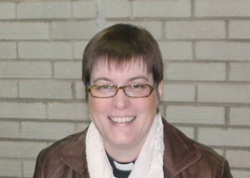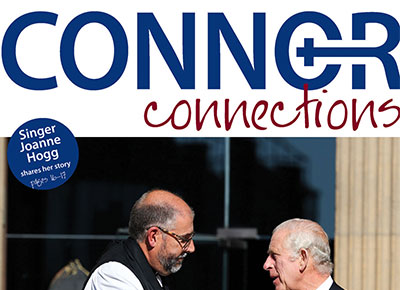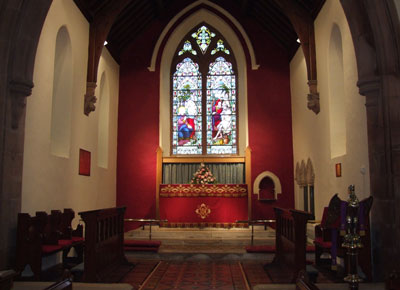Disability Awareness Sunday focuses on deafness and hearing loss
 November 17 is Disability Awareness Sunday in the Church of Ireland and the focus this year is on deafness and hearing loss.
November 17 is Disability Awareness Sunday in the Church of Ireland and the focus this year is on deafness and hearing loss.
The Church’s Working Group on Disability wishes to encourage churches to consider how to help deaf people and people with hearing loss to participate fully in parish life and worship.
The chairperson of the Working Group, the Rev Jennifer McWhirter, has compiled some helpful information (below) giving more general knowledge of this issue. Levels of deafness vary from mild to moderate to severe and profound deafness, and statistics reveal that in the UK one in six of the population is deaf and 8.3 million people are hard of hearing while in the Republic of Ireland there are 5,000 profoundly deaf sign language users and 225,000 people who are hard of hearing.
Jennifer, who is also Church of Ireland Chaplain to the deaf, suggests that parishes can help address deafness and hearing loss by considering the following practical measures:
• Installing a loop system in churches, making sure they are regularly checked, and ensuring they are switched on during services. Also make sure that those leading the service remember to use the microphone.
• Using a screen. While it is acknowledged that not every parish has a screen in church, nor wants one, a screen displaying the service can be a great help to someone who is deaf.
• If clergy and people know that there is a parishioner who is profoundly deaf and uses sign language, learning a few signs to be able to say hello and ask them how they are shows that you care.
• If you are holding a special service (e.g. baptism, wedding or funeral) and are aware that someone who is deaf and uses sign language will be attending, then employ the services of an interpreter. (In Northern Ireland Jennifer can help with this).
Some information on deafness
There are different categories of deafness.
• Deaf people (with a capital D) – Deaf people are those who see themselves as a cultural and linguistic group. They use Sign Language as their first or preferred language. Most Deaf people have a moderate to profound hearing loss. They are likely to have been born deaf, but some became deaf in childhood and acquired sign language as their preferred language through specialist schools where they mixed with other Deaf children. Deaf people take pride in their language and culture, and usually socialize together, known as the Deaf community, which can also include hearing children of Deaf parents who may have learned sign language as a first language in childhood.
• Deafened people – Deafened people were born hearing or hard of hearing, and became deaf after having developed language skills. They have a profound to total hearing loss that can happen either gradually or suddenly as a result of heredity, illness, drugs or surgery. Sometimes people can become deafened for no apparent medical reason. Because of the level of hearing loss, deafened people often gain little or no benefit from hearing aids and may rely on lipreading for receiving communication. But, lipreading is a skill that has to be learned like any other skill – it would be wrong to assume that all deafened people can lipread! If you suddenly lose your hearing, the psychological effects of deafness can be devastating. There is a period of time when no alternative communication method is available, except for writing things down. Not only does lipreading have to be learned, painfully and over a prolonged period of time, but learning sign language may be equally difficult. For deafened people, learning sign language is like having to learn another language, and it may not be of much benefit unless the deafened person’s hearing friends and family learn sign language too. Cochlear implants are suitable for some deafened people, and many rediscover some sensation of hearing as a result – although some describe the sound as ‘synthetic’ at first. This sensation changes over time and most users become acclimatized to this artificial sound quality after a few months. A cochlear implant is not a cure for deafness, it is a hearing device with an external antenna and microphone that have to be removed for sleeping, washing of hair, and some sports. The user will still be totally deaf when this happens. Deafened people often say they feel left out of both the hearing and deaf worlds, as they do not feel equipped to function effectively in either culture.
• Hard of hearing – Hard of hearing (HOH) people are the largest group of deaf people and usually become deaf through age. Like deafened people, they have to develop whatever communication skills they can to allow them to continue mixing with their hearing friends and family. HOH people usually have mild to severe hearing loss, and some may have had a mild deafness at birth that got progressively worse over time. HOH people retain some hearing. They usually communicate through speech, and receive communication with or without amplification (hearing aids) and using lipreading. Some HOH people are quite happy to call themselves ‘hearing impaired.’
Levels of deafness
Mild deafness
• May experience some difficulty understanding speech, especially in noisy situations
• May no longer hear sounds such as birdsong or people whispering
• May benefit from a hearing aid
• May lipread
Moderate deafness
• May experience difficulty understanding speech without the use of a hearing aid, even in ordinary situations
• May miss out on many speech sounds
• Most can use a voice telephone with an amplifier and / or inductive coupler if they wear a hearing aid
Severe deafness
• May find it difficult to understand speech even with a hearing aid
• May not hear noises such as lorries
• Will rely more on lipreading or sign language
• Find it difficult to answer a voice telephone, even with power amplification
• May need a textphone
Profound deafness
• May not hear sounds such as a pneumatic drill or aircraft
• May find hearing aids will be of very little or no benefit
• Rely heavily on lipreading or other visual methods of communication, such as sign language
• May be unable to use a voice telephone, even with amplification
• Will more than likely need a textphone
Some statistics
UK
• 10 million people in the UK are deaf (1 in six of the population)
• 8.3 million are hard of hearing
• 356,000 people experience some level of dual sensory loss (i.e. Both deafness and blindness)
• 123000 people are deafened
• 45,000 deaf children in the UK
ROI
• 5000 profoundly deaf sign language users in the Republic of Ireland
• 225,000 people are hard of hearing
• 2000 children with disabling hearing loss attend mainstream and special schools
© Copyright The Church of Ireland Diocese of Connor 2025 | Web Design by LD2.digital




